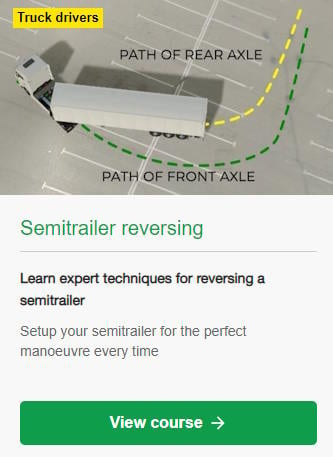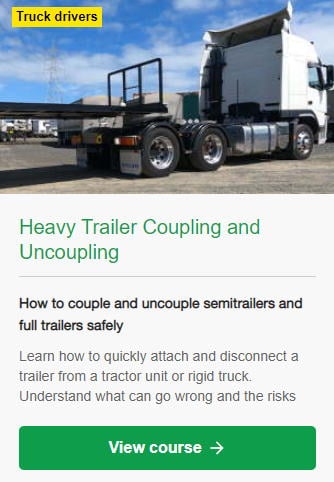A semitrailer has a kingpin and skid plate. This kingpin fits inside the locking jaws of a fifth wheel, with the skid plate resting on the fifth wheel. The fifth wheel is greased and that’s what enables the trailer to turn to follow the tractor unit.
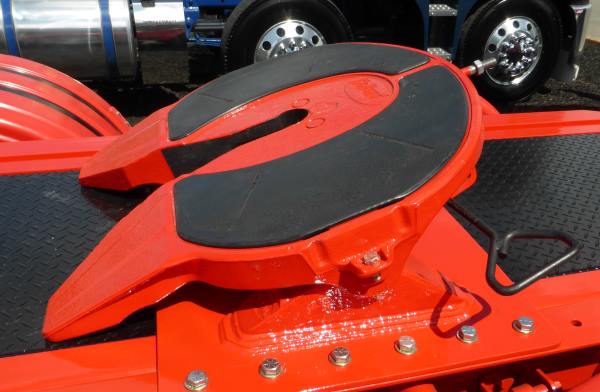
Of course, the fifth wheel and the skid plate must be at a compatible height, otherwise the deck of the trailer would be at an angle, sloping backwards or forwards, or the kingpin would not be locked into the fifth wheel correctly (it forms what’s called a ‘high hook’, which can disconnect unexpectedly). A sloping trailer would compromise the stability of the freight. If the trailer is sloping rearwards, it would increase the wear on the rearmost axle as it would be taking more of the load.
A standard fifth wheel sits at around 1250mm from the ground. There are scenarios where having the lowest fifth wheel possible would be advantageous because the maximum height of a truck before a permit is required is 4.3m. If you can get another 100mm of height, it could make the difference between having to take a longer route or not due to a low bridge, or having to pay for a permit. Situations like this are often encountered when moving large machinery, and to do this, you could use an adjustable fifth wheel (and you’ll probably be using a low-loader trailer, too).
The controls for an adjustable fifth wheel are either in the cab or on a panel just behind the cab.
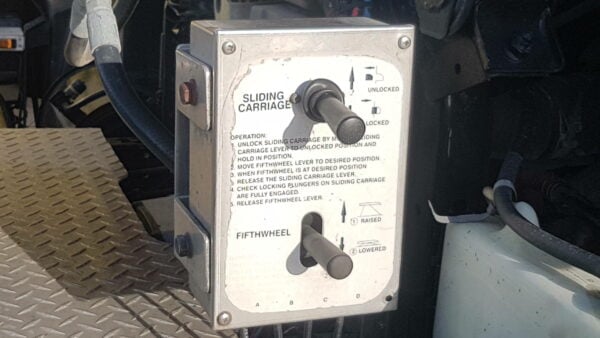
To adjust the height of the fifth wheel, the trailer should be disconnected as the rams that move the fifth wheel are not powerful enough to lift a trailer. If it’s manually activated, you won’t be able to release the lock on the fifth wheel.
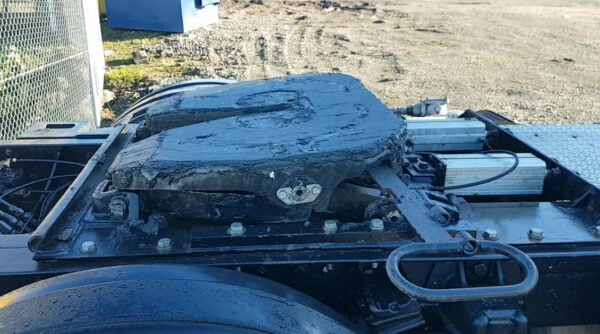
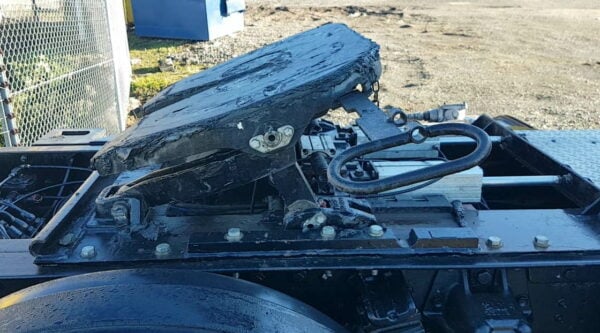
Once you have changed the height, you can recouple the trailer. Bear in mind that you should understand the maximum legal axle weights for your vehicle when you are loading it.
To learn how to couple a trailer, you’ll need to do a trailer coupling course, which is convenient and quick to do online, and once you’ve coupled you’ll need to know how to manoeuvre your semitrailer.
